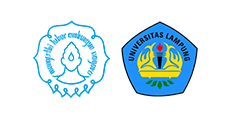Improving Student Understanding in Animation Lessons Using Open Ended Project Based Learning Models Assisted With Augmented Reality Technology
Abstract
The competence of students in understanding and applying animation in making animated films is still low. This study aims to improve the learning outcomes of Animation lessons in class XII Film Production using the Open-Ended Project Based Learning model assisted by Augmented Reality Technology. This study used the CAR (Classroom Action Research) method, carried out in two cycles with one meeting in each cycle, consisting of planning, implementation, observation, and reflection. Data collection techniques in this study were observation, interviews, tests, and field notes. The data analysis technique used quantitative and qualitative analysis. The results in this study are the percentage of student's knowledge in the first cycle, which is 69% quite good, and in the second cycle, 74% good. The rate of student's skills in the first cycle is 80% good, and in the second cycle, 94.3% is very good. This study concludes that the Open-Ended Project Based Learning model assisted by Augmented Reality Technology can improve cognitive and psychomotor learning outcomes in Animation lessons in class XII Film Production.
Kata Kunci: Animation, Augmented Reality, Open Ended Project Based Learning.
Full Text:
PDFReferences
S. Purwo, “Peran Gerakan Literasi Sekolah Dalam Pembelajaran Kreatif-Produktif Di Sekolah Dasar,” J. Chem. Inf. Model., vol. 3, no. 1, pp. 85–103, Mar. 2017, Accessed: Sep. 29, 2022. [Online]. Available: https://journal.stkippgritrenggalek.ac.id/index.php/kid/article/view/85 [2] J. Surif, N. H. Ibrahim, and S. F. Dalim, “Problem Solving: Algorithms and Conceptual and Open-ended Problems in Chemistry,” Procedia - Soc. Behav. Sci., vol. 116, pp. 4955–4963, Feb. 2014, doi: 10.1016/J.SBSPRO.2014.01.1055. [3] T. S. Sumartini, “Peningkatan Kemampuan Pemecahan Masalah Matematis Siswa melalui Pembelajaran Berbasis Masalah,” Mosharafa J. Pendidik. Mat., vol. 5, no. 2, pp. 148–158, 2016, Accessed: Sep. 28, 2022. [Online]. Available: https://journal.institutpendidikan.ac.id/index.php/mosharafa/article/view/mv5n2_12 [4] “MODEL OPEN ENDED PROJECT BASED LEARNING BERBANTUAN GEOGEBRA PADA MATERI ... - Detalia Noriza Munahefi, Mulyono, Dwijanto, Regilsa Fariz, Karima Khoirunnisa, Bebyd Noverinto - Google Books.” https://books.google.co.id/books?hl=en&lr=&id=vD5BEAAAQBAJ&oi=fnd&pg=PA7&dq=pembelajaran+open+ended+project+based+learning&ots=sJcafOCnrg&sig=BypYLZz4tHagxchnFGMc4Z1Mwuw&redir_esc=y#v=onepage&q=pembelajaran open ended project based learning&f=false (accessed Sep. 29, 2022). [5] R. Hamdani and M. Sondang Sumbawati, “Pengembangan Media Pembelajaran Berbasis Augmented Reality Pada Mata Kuliah Sistem Digital di Jurusan Teknik Informatika UNESA,” J. IT-EDU, vol. 04, no. 52, pp. 153–161, 2020, Accessed: Sep. 28, 2022. [Online]. Available: https://ejournal.unesa.ac.id/index.php/it-edu/article/view/31700 [6] M. . Dr Muhammad Yaumi, M.Hum., Prinsip-Prinsip Desain Pembelajaran: Disesuaikan Dengan Kurikulum 2013 Edisi Kedua - Dr. Muhammad Yaumi, M.Hum., M.A. - Google Buku. 2013. Accessed: Sep. 29, 2022. [Online]. Available: https://books.google.co.id/books?hl=en&lr=&id=gDu2DwAAQBAJ&oi=fnd&pg=PP1&dq=yaumi+2017&ots=sd1vml-ajc&sig=CK3KLiORc1cELq52miIlWtDQOk8&redir_esc=y#v=onepage&q=yaumi 2017&f=false [7] I. Clark, “Formative Assessment: Assessment Is for Self-regulated Learning,” Educational Psychology Review, vol. 24, no. 2. Springer, pp. 205–249, Jan. 04, 2012. doi: 10.1007/s10648-011-9191-6. [8] KOMINFO, “Survey Penggunaan TIK 2017,” 2017. [9] Y. J. Alfares and W. Murwonugroho, “PENERAPAN TEKNOLOGI AUGMENTED REALITY UNTUK MEDIA PEMBELAJARAN INTERAKTIF PADA ANAK,” J. Penelit. DAN KARYA Ilm. Lemb. Penelit. Univ. TRISAKTI, vol. 6, no. 2, pp. 202–212, Jun. 2021, doi: 10.25105/pdk.v6i2.9526. [10] A. Burhanudin, “PENGEMBANGAN MEDIA PEMBELAJARAN AUGMENTED REALITY PADA MATA PELAJARAN DASAR ELEKTRONIKA DI SMK HAMONG PUTERA 2 PAKEM,” J. Pendidik. Tek. Mekatronika, vol. 7, no. 3, pp. 266–274, May 2017, Accessed: Sep. 29, 2022. [Online]. Available: https://journal.student.uny.ac.id/index.php/mekatronika/article/view/8603 [11] I. Mustaqim, “PENGEMBANGAN MEDIA PEMBELAJARAN BERBASIS AUGMENTED REALITY,” J. Edukasi Elektro, vol. 1, no. 1, Aug. 2017, doi: 10.21831/JEE.V1I1.13267. [12] R. S. Untari, F. Su’udiah, and V. Liansari, “Skenario Open Problem Based Learning (Opbl) Pada Animasi Teks 2D Menggunakan Pendekatan Polya,” J. Nas. Pendidik. Tek. Inform., vol. 9, no. 3, p. 281, 2020, doi: 10.23887/janapati.v9i3.28018. [13] E. M. A. Nuryanto;, Metode Penelitian Terapan Bidang Pendidikan / Endang Mulyatiningsih. Alfabeta, 2014. Accessed: Sep. 28, 2022. [Online]. Available: //senayan.iain-palangkaraya.ac.id/index.php?p=show_detail&id=11121&keywords= [14] S. K. Fajarwati, H. Susilo, and S. E. Indriwati, “PENGARUH PROJECT BASED LEARNING BERBANTUAN MULTIMEDIA TERHADAP KETERAMPILAN MEMECAHKAN MASALAH DAN HASIL BELAJAR PSIKOMOTOR SISWA KELAS XI SMA,” J. Pendidik. Teor. Penelitian, dan Pengemb., vol. 2, no. 3, pp. 315–321, Mar. 2017, doi: 10.17977/JPTPP.V2I3.8583. [15] D. Baser, M. Y. Ozden, and H. Karaarslan, “Collaborative project-based learning: an integrative science and technological education project,” http://dx.doi.org/10.1080/02635143.2016.1274723, vol. 35, no. 2, pp. 131–148, Apr. 2017, doi: 10.1080/02635143.2016.1274723. [16] O. Yevdokimov and T. Passmore, “Problem Solving Activities in a Constructivist Framework: Exploring how Students Approach Difficult Problems”.
Refbacks
- There are currently no refbacks.






